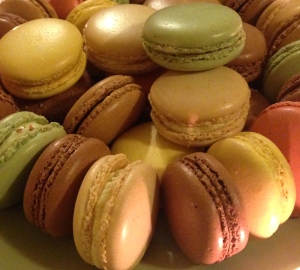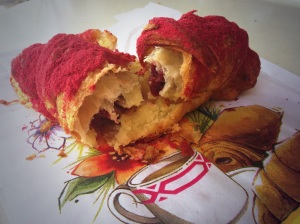As you may know, my second attempt at croissants resulted in a quite pale version of the original. After realizing a little late in the initial baking process that I had not slathered egg wash atop each roll, I was disheartened at the pasty pastries that I extracted from the oven. As I gazed at their less-than-glossy surfaces, I wondered if I could apply the egg wash and try a second round in the oven. Would this ruin them for good, or revive them? I had to try!
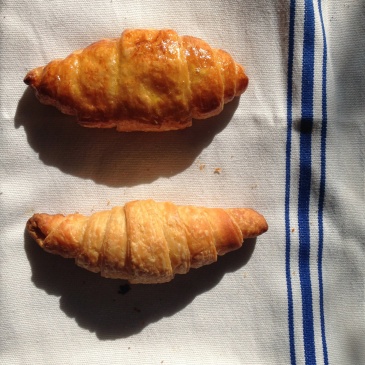 At the same baking temperature as before – 360 degrees – I applied the wash to one previously baked croissant (using more yolk than white), and left one without to test the variation. In they went for roughly 6 minutes. At first there appeared to be no observable difference between the two but, after the time was up, there was a remarkable transformation for one. It became golden, the texture of the pastry more pronounced (and most certainly more appetizing).
At the same baking temperature as before – 360 degrees – I applied the wash to one previously baked croissant (using more yolk than white), and left one without to test the variation. In they went for roughly 6 minutes. At first there appeared to be no observable difference between the two but, after the time was up, there was a remarkable transformation for one. It became golden, the texture of the pastry more pronounced (and most certainly more appetizing).
What I did not expect was that the croissants themselves would thus feel so different. The egg wash infused the first with moisture, allowing for an easy tear reminiscent of the first croissants I had baked. The second “unwashed” version was difficult to separate into two halves, seeming to have gotten drier and tougher.
All in all, I now know that I could have popped out the croissants the moment I realized the wash was missing, painted it atop each proofed piece of dough, and the pastries ultimately would have been fine. A successful experiment, but one I hope not to repeat (by remembering the wash in the first place)!
Until next time,
SugarSource
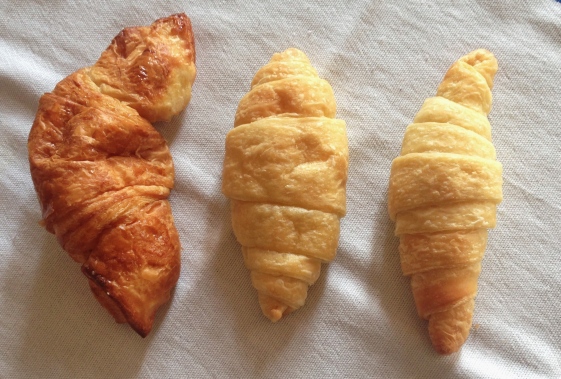 After initially taking
After initially taking 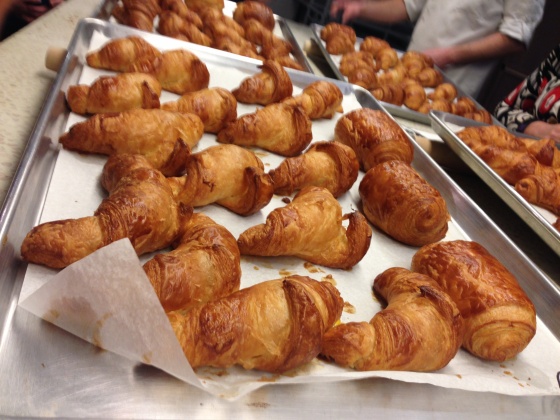 I finally took the plunge, and signed up for a croissant class at
I finally took the plunge, and signed up for a croissant class at 